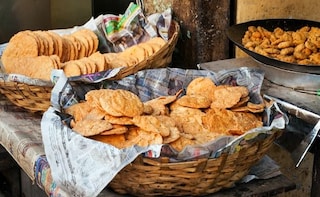Yes, we've always known street food isn't exactly hygienic. But then who can resist a plate of those magical deep-fried aloo tikki, those mind-blowing round and flaky gol gappas and don't even get me started on freshly steamed momos. From easy snacks to complete meals: India's street food is inexpensive, delicious and easily available across the country. That's till you get your first bout of food poisoning.
Advertisement
Advertisement
Advertisement
Advertisement
For the latest food news, health tips and recipes, like us on Facebook or follow us on Twitter and YouTube.
Advertisement
Tags:
